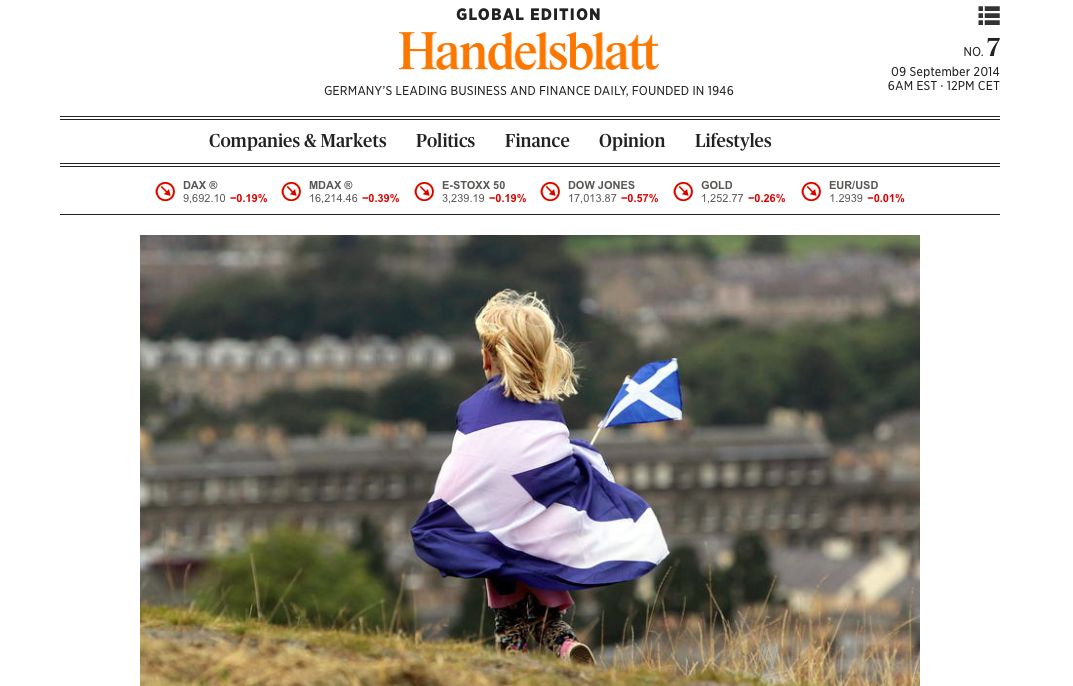In disciplines like politics, economics, and consumerism as well as in journalism, the issue of transparency has become an important value. Globalization, the Internet, and the first generation of digital natives are working as engines in this process. On hotel rating platforms, for example, transparency can be regarded as a business selling argument – or as the contrary. In any case, transparency creates accountability and reliance. These findings are transferable to the field of journalism, especially in a digital world. Transparency prospers in a linked medium, for you can literally see the connections between the final draft’s claims and the ideas that support it. Print newspapers, on the other hand, lacks hyperlinks. You can look up the footnote, but that’s an expensive and time-consuming activity more likely to result in failure than success. The present era can be described as the Age of Links and transparency as the “embedded ability to see through the published draft“ (Weinberger 2009). In a wired world of global connection and social networks, it seems almost impossible to manipulate recipients, censor information, or suppress discussion and debate. Media users all over the world have easy access to a fast, free, and ubiquitously accessible discourse on media and its contents via social media and the Web 2.0. Nevertheless, Arab journalists work within completely different conditions compared to their colleagues in the Western world. With the help of occasional self-censorship, they try to protect themselves against the regime, especially in Egypt. Despite these constraints, Arab journalists attempt to work as transparently as possible, they can be contacted via e-mail or telephone in addition to feedback, comments, and advice received from viewers, listeners, and readers.
Definition of journalistic transparency:
U.S. media scholars Stephanie Craft and Kylie Heim (2009) characterize the notion of transparency across all disciplines as the “availability of information and as a disclosure of it” (ibid.). U.S. political scientist Ann Florini (2002), instead, describes transparency as the opposite of secrecy and confidentiality: “(…) Secrecy means deliberately hiding your actions; transparency means deliberately revealing them. This element of volition makes the growing acceptance of transparency much more than a resigned surrender of the technologically facilitated intrusiveness of the Information Age” (ibid.). Business analysts Don Tapscott and David Ticoll (2003) consider transparency from the perspective of economics and approach the concept in their first general definition: “Transparency is information about an organization that is available to people or other organizations…” (ibid.). They describe transparency as an “Engine of Greatness,” as a force for innovation and future, and rely on models of success, among other platforms like eBay, where transparency and rates make sense. From the perspective of media economics, transparency in journalism can be regarded as a strategic option of trust in order to avoid losing recipients and to stabilize the media brand (Meier, 2010; Evers / Eberwein, 2011). Despite their potential, journalists are often afraid to use tools to create transparency and publicity. The journalists’ ambition has never been to disclose how and under what circumstances a journalistic contribution has arisen (Meier / Reimer, 2011). In comparison to the term “accountability,” the concept of “transparency” does not implicate the effect. In previous studies on the subject, a clear-cut delineation between instruments of transparency and the method of “media accountability” was missing (Fengler et al., 2011). The difference lies in the definitions, especially in the fact that transparency instruments themselves are descriptive, while “media accountability” is normative. The ethically desirable establishing of trust is not implied in the description of transparency instruments. Craft and Heim (2009) describe “accountability” as the result of transparency and believe that transparency instruments ultimately help to establish trust in the media: “This implied linkage among readers’ ability to witness, to evaluate, and, therefore, to trust, indicates the valued role transparency plays in facilitating journalistic accountability.” (ibid.)
A categorization of transparency tools:
In journalism, various instruments for creating transparency can be found. Journalism scholars distinguish between journalism-internal and journalism-external instruments (Evers / Eberwein, 2011; Bettels et al., 2011). On one hand, internal instruments like the by-line, deep links, or additional information, are classified as transparency tools that are created by journalists and that occasionally lead to more information on the editorial department, on journalistic work processes, on sources, and on editorial decision processes (Bettels et al., 2011). On the other hand, there are external instruments like media journalism, academic research, blogs, media criticism in social networks, or online comments that also lead to a certain form of transparency (Fengler, 2008; Eberwein et al., 2012). Moreover, the study distinguishes between simple and innovative instruments. Simple transparency instruments are instruments that are easy to install and that require little effort – like the by-line, information on the author, or the possibility to comment. Innovative instruments develop at a higher level of self-reflection like blogs, descriptions of the news production, or editorial blogs.
Transparency as a form of “window dressing“:
Transparency in journalism should be considered more complex than positive, since a closer inspection illustrates pitfalls. Firstly, the effectiveness of many transparency instruments have yet to be proven empirically (Craft / Heim, 2009), because the field of research in media science is relatively new and unexplored. Secondly, some of these instruments have a slightly illusionary effect and can be installed due to publicity and marketing reasons. (Fengler et al., 2011). In this case they tend to contribute to transparency by their very nature, although this is not intended. The tools are mainly implemented for business reasons in order to stabilize the media brand. Susanne Fengler, a German professor for international journalism, points out: “Good PR for the journal, but little transparency for the reader.” (ibid.). As a result this is merely an “illusion of inclusion” (ibid.). Consequently, many accountability instruments simply lead to an increased publicity effect and, according to the Dutch media expert Yael de Haan (2011), “seem to be more a form of window dressing than a true attempt to restore trust in their performance.” The idea of full media transparency and everything connected to it, such as audience participation, is still in its infancy in the Arab world (Lahlali, 2011). The news channel Al Jazeera was a pioneer in introducing call-in shows with participatory elements (Miles, 2005). Elsewhere, it is mentioned that the Internet could spread and compact the political discourse in the Arab sphere (Hafez, 2009). According to the social scientists Mahjoob Zweiri and Emma C. Murphy (2011), the Social Web opens a new world of dialogue and conversation in the Middle East.
The methodology:
Comparing the United Arab Emirates to Egypt is appealing as these countries are quite heterogeneous, although they both belong to the Arab World. These discrepancies relate not only to the media systems, but also to the political and cultural development of the two states (Hahn / Alawi, 2007; Hermann, 2011). Many characteristics run diametrically above the others. Both states possess scientific media relevance, particularly they both reference media outlets with an impact throughout the Arab World, like Abu Dhabi TV, Al Arabiya (UAE), Al Ahram and Al Akhbar (Egypt) (Rugh, 2004). As there is no systematic knowledge in communication science about instruments of journalistic transparency in the Arab sphere, exploratory knowledge and results were generated in this study by using a qualitative method. Twelve Arab journalists were interviewed with semi-structured qualitative guidelines, with interviews conducted on site, via telephone, or via Skype. In all cases, it was important to create an open conversation atmosphere.
Results:
One of the most obvious results is that in the UAE there tends to be more openness towards innovative transparency instruments than in Egypt. In order to strengthen their market position, the Emirates media use Twitter and Facebook to suggest credibility. A journalist working for the TV-station Al-Arabiya in Dubai says: “I think that Arab media has learn[ed] a lot of lessons from the Arab Spring.” Another journalist from Abu Dhabi points out the importance of the Internet and how journalists should utilize it. He says: “The Internet will increase pressures on conventional media organizations to be transparent and clear and not to hide information. Audiences have other ways to obtain information and are able to bypass traditional channels. If you don’t watch out, you would be left behind. (…) Online media are the future communication platform on which all traditional media will converge. If you don’t join the bandwagon, you would be the loser in this technological transition.” A journalist from the Egyptian newspaper Al-Akhbar adds: “(…) what you hid is going to be there. People want to have communication, so they start to communicate.” The flare-up of journalistic transparency can be seen in the political context of the impact of the Arab Spring. These two phenomena have as a consequence in common that each citizen is able to voice their thoughts. Transparency in terms of making editorial processes public seems only peripherally present, because both countries need time to develop the idea of social participation – and the idea of a self-reflected journalism. A journalist working for the Abu Dhabi based newspaper The National reflects: “There has been a major change (.) Not just for stories, but (.) for journalism itself. There is now a higher connection between the people and journalists (…) They can comment everything I have written.” There has been a major change in how media outlets deal with their recipients, she says. “Everything is now available to everyone. They can comment whatever they think.” In the end, these comments lead to more intensive conversations with journalists and authors. When comparing print and TV media in terms of journalistic transparency, it is striking that print engages more in the use of transparency instruments than TV, although a general statement is hard to find in this context, meaning each medium should be analyzed on its own regarding transparency.
The article is based on the author’s Master thesis.
See bibliography and references here.
Tags: Abu Dhabi TV, Al Ahram, Al Akhbar, Al Arabiya, Al-Jazeera, Arab Media & Society, Arab Spring, Facebook, Media Censorship, Media Transparency, Newsroom Transparency, Social media, social networks, Twitter












































